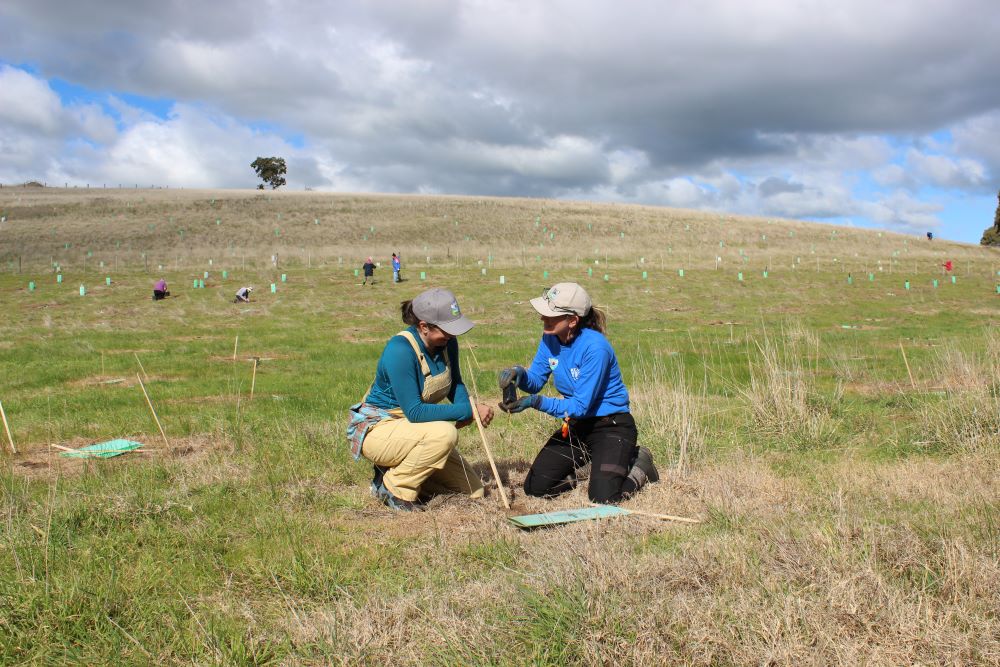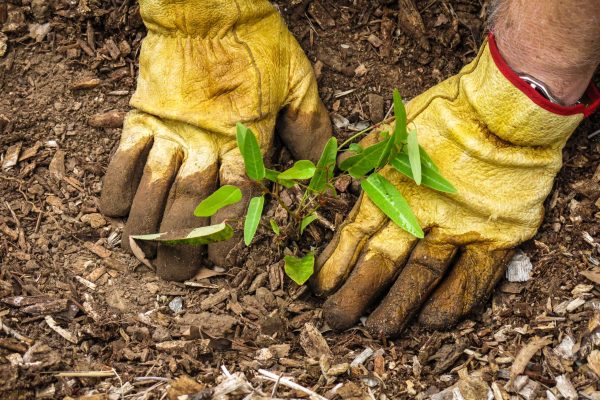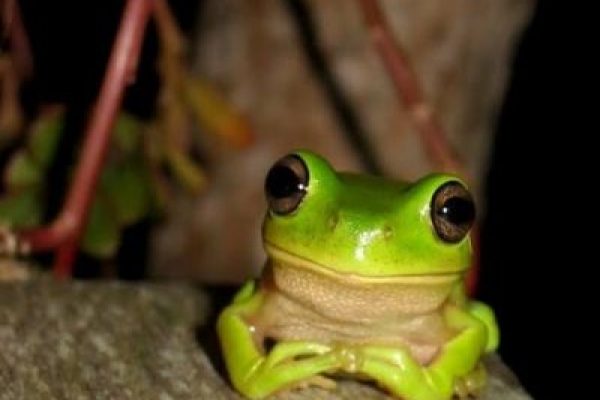May 13, 2024
|
A Subscription for the Planet.
TREES PLANTED
870
Dear Friends of Fifteen Trees,
As we start to organise your trees for 2024, we will be be updating this blog and periodically sending you the link.
Collectively, we are contributing to the restoration of our Australian ecosystems.
Colleen Filippa | Founding Director | Fifteen Trees
Thank you to all our wonderful supporters (86) …
Mik Aidt, Deborah Bourke, Dana Bretag, Sandra Briody, Jenn Clark, Amanda Gambino, Rose Harrison, Rosie Hunt-Walshe, Andrea Hurley, Jacob Johnston, Sean Keniry, Sara Kittelty, Jill Clarke & Paul Duggan, Rosalind Read, Annabel Ritchie, Lynn Teale, Mary Wade, Lorena Wootton, Rae Knowler, Bette Schwarz, Caitlyn Jordan, Sonja Meyer, Georgina Imberger, Carole Felmy, Fiona Leahy & Antony Swingler, Sandra Hawkins, Christopher Hawkins, James Hosking, Marian Turner, Nyree Windsor, Glenys Grigg, Lucy Bracey, Sarah Hart, Eliza-Jane Gilchrist, Fiona Baxter, Corinna Klupiec, Jess Tatham-Thompson, Heather Charlesworth, Sean Werth, Martine Stoll, Paul Mason, Sylvia Nevistic, Bronwen James, Sharon Chan, David & Karen Dawson, Michael Nicols, Keitha Theodore, Julie Atkinson, Natasha Ludowyk, Belinda Coates, Joanna Cosgriff, Lena Mazza, Andrew Griffiths, Jen Askham, Anthony & Catherine Clifford, Elsa Lynn, Samantha Little, Marji Puotinen, Gerri Savage, Matthew Stevens, Esther Cantwell, Susan & Darryl Murray, Ellen Burns, Bree Webster, Liam Derby, Sara Melvin, Helen Browitt, Fern Hames, Daniel Cocking, Cait Larcombe, Swell Magazine, Anthony (AJ) Sleeman, Denise McAloon, Erin Lee, Sam Munday, Suzannah Morrison, Russell Baker, Moria Finucane, Carla Bergen, Jonny Fenderson, Sue Giles, Michelle Lilley, Helen Pritchard, Lesley Jones, Ian Heriot and Eliza McDonald.
Mount Cole / Bereep-Bereep, VIC | 500 trees
The site is on the foothills of Mount Cole, home to the Beeripmo balug tribe that form part of the larger Djab Wurrung language-speaking people. The trees were a mixture of River sheoak, Swamp gum, Red river gum, Blackwood, Red ironbark, Yellow box, Red box, Ovens wattle, Golden wattle, Cootamundra wattle. These trees will complement the original vegetation of stringybarks (messmate and red), Manna gum, Yellow box, Blackwood and Black wattle.
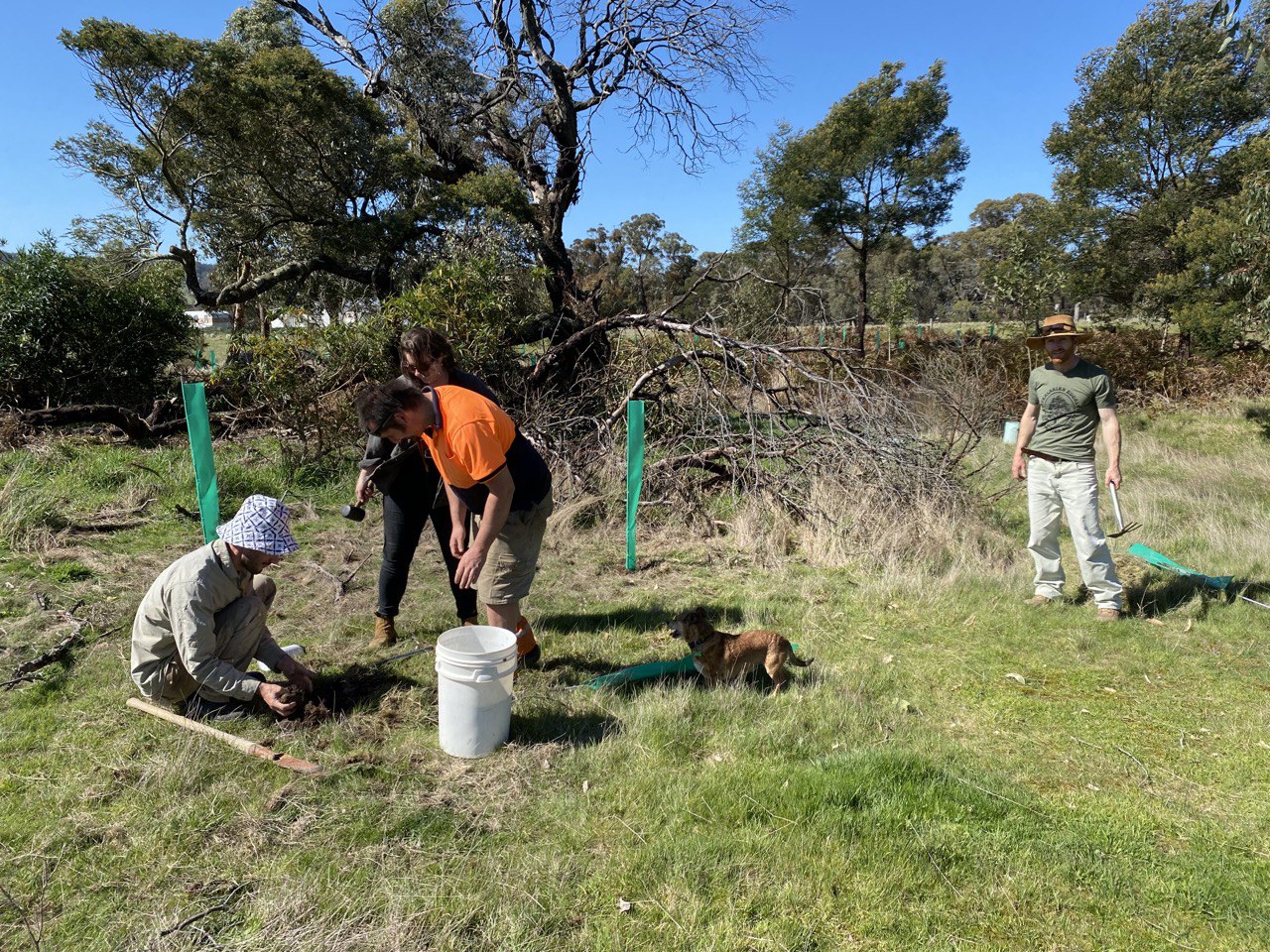
The planting will help reduce erosion along the gullies, provide habitat for wildlife and fodder for pollinators.
The area is alive with native bird such as: Wedge tailed eagles, Australian wood ducks, White-faced heron, White-necked heron, Australian white ibis, Yellow-tailed black cockatoo, Galah, Sulphur-crested cockatoo, Crimson rosella, Tawny frogmouth, Laughing kookaburra, Welcome swallow, Flame robin, Superb fairy-wren, Red-browed finch, White-winged chough, Australian magpie, and Australian raven. Wildlife that visit the area includes: Eastern grey kangaroo, Echidna, Black wallaby, Brushtail possum, Sugar glider, Stumpy tail lizard, Eastern brown snake, Tiger snake, and many kinds of frogs (including Banjo frogs).
Thank you very much for your contribution. We’ve been planting trees on this site every year for the past 7 years, and we can see how big of a difference it makes. More wildlife is coming back every year. The trees are really bring life back to the land.
Audrey Thomas | Member | Pyrenees Shire
Bacchus Marsh/ Wadawurrung, VIC | 370 trees
The planting site for these trees was on the Werribee River at Ballan, VIC (Wadawurrung country). This is an important site in the landscape, with the Werribee River marking the northern boundary. This project will improve connectivity through the site, connecting habitat in the rail reserve at the south of the site to the escarpment planting in the north.
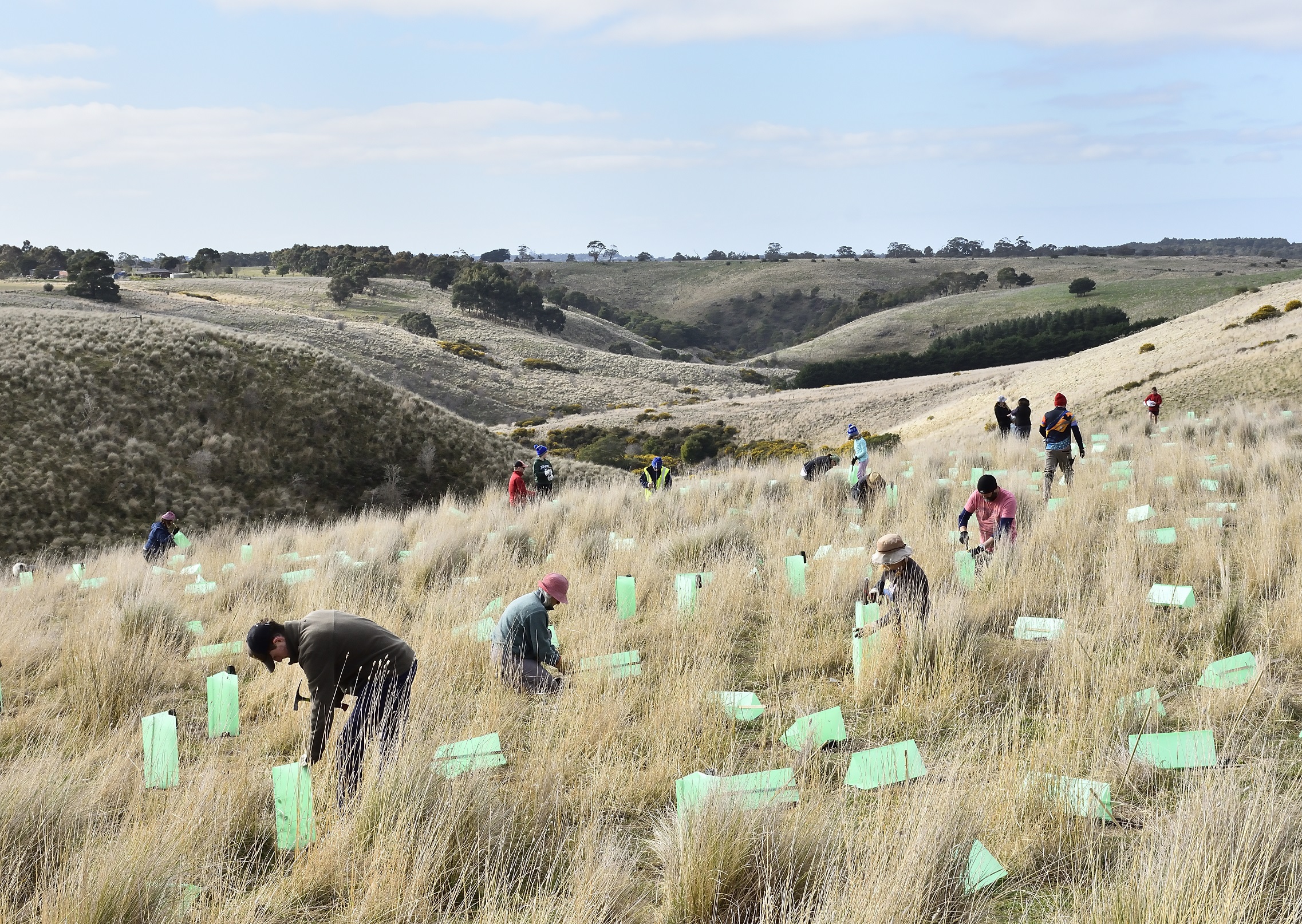
Thirty-two (32) species of plants ranging from herbs and grasses through to large trees were planted. Some of the species included: kangaroo grass, chocolate lily, rock correa, golden wattle, black wattle and manna gum.
This site sits within an Ecological Vegetation Class called Grassy Woodland of the Victorian Volcanic Plain Bioregion. The conservation status of the vegetation community along this whole corridor is endangered, (even though some species are common). This work helps to improve the habitat value of this significant river link through the landscape.
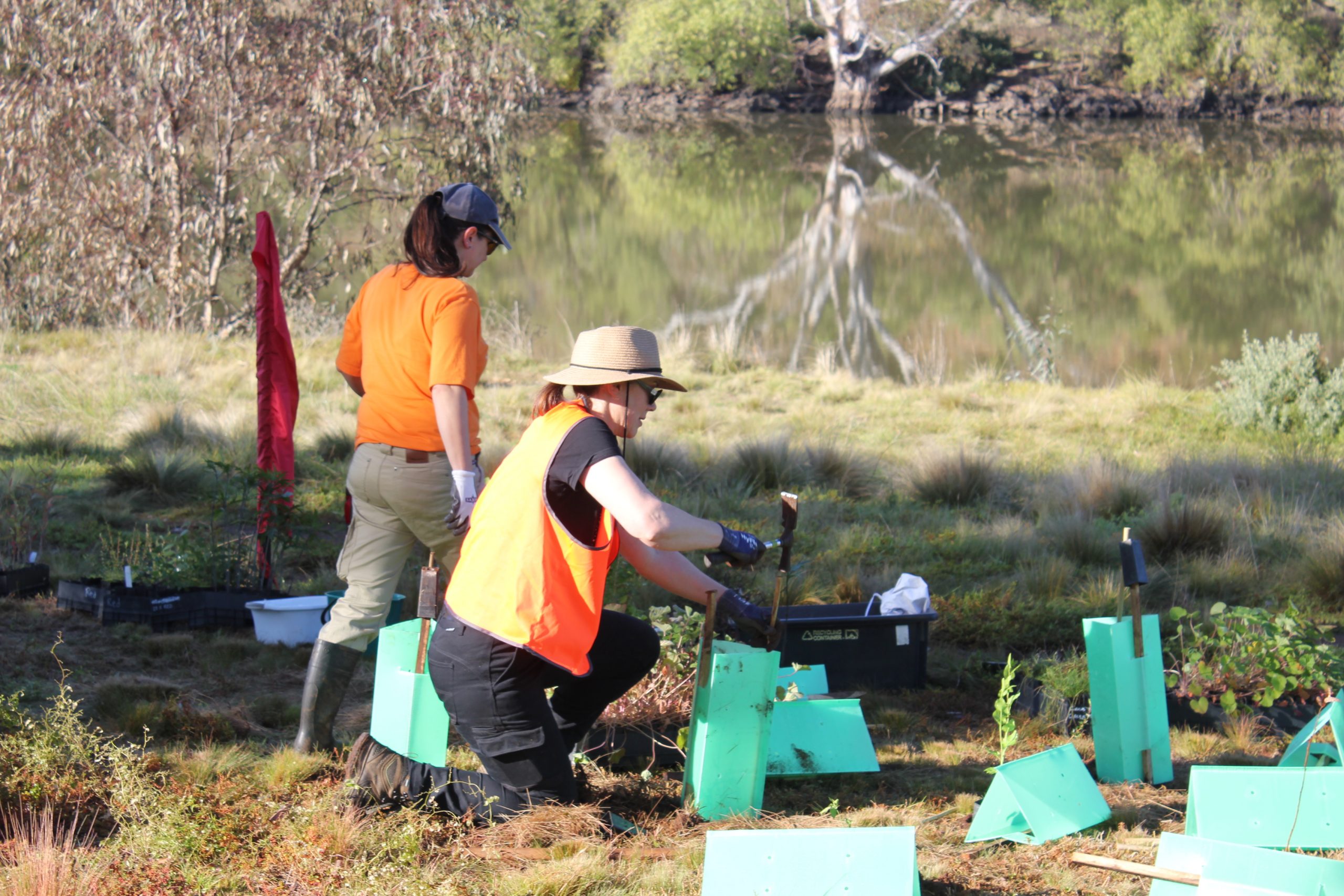
The iconic Platypus is regularly seen in this stretch of the river and gliding above the majestic Wedge-tailed Eagles can be spotted.
The Upper Werribee Catchment Group would like to thank the sponsors of Fifteen Trees that finance the seedlings for projects like ours. Without your support, we wouldn’t be able to have the significant impacts that we do in connecting habitat throughout the upper Werribee catchment.
Lindy MacRaid | Coordinator | Upper Werribee Catchment Group
Here’s a link to your trees from 2023. One hundred subscribers = 6,000 trees
A a heartfelt thank you to all our ‘Subscribers for the Planet’.
Writer: Colleen Filippa
With a background in Environmental Science, Colleen is the Founding Director of Fifteen Trees. In 2009, after 20 years in primary, secondary and tertiary education institutions, Colleen left the classroom to start the company. Fifteen Trees is a social enterprise assisting individuals and companies to reduce their carbon footprint by supporting community groups such as Landcare, schools and environmental networks.
RECENT TREE PLANTINGS
1,200 TREES PLANTED
135 TREES PLANTED
1110 TREES PLANTED
SIGN UP FOR OUR MONTHLY UPDATES.
Restoring Australian ecosystems. Supporting communities with their revegetation projects for a greener and healthier planet.
Fifteen Trees acknowledges Indigenous Australians as the traditional custodians of the lands on which we work, live and play.
We recognise that Indigenous Australians have cared for and lived in harmony with this land for millennia, and their knowledge and wisdom of the land endures.
We pay our respects to Elders past, present and emerging and stand in solidarity as Indigenous Australians seek a fairer and more sustainable future for the land and its people.
